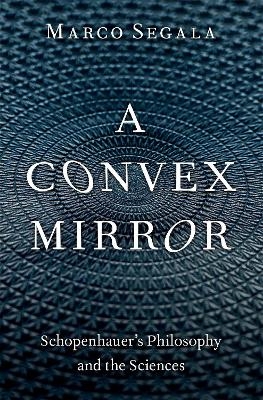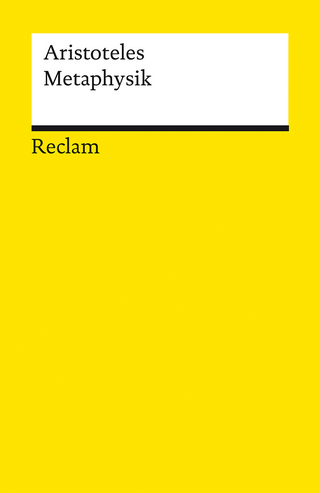
A Convex Mirror
Oxford University Press Inc (Verlag)
978-0-19-759915-0 (ISBN)
A Convex Mirror sheds new light on the development of Schopenhauer's philosophy and his ongoing engagement with the natural sciences. Understanding Schopenhauer's metaphysics requires both an insight into his relationship with science and an appreciation of the role of the natural sciences in his philosophical project. In the first edition of The World as Will and Representation (1819), Schopenhauer dealt with science within the framework of Kant and Schelling's philosophies of nature, but his growing perplexity with them led him to an original, more complex conception of the relationship between science and metaphysics. He therefore embarked on a revision of his metaphysics of nature, which ultimately affected its core concepts--namely, the will and ideas--and influenced his decision to publish a volume of Supplements (1844) rather than a revised edition of his main work.
The evolving relationship of Schopenhauer's philosophy to the natural sciences is a powerful interpretative tool: a "convex diffusing mirror" that reflects the totality and complexity of his system and sheds light on the core concepts of his philosophy, such as the systematic structure of his philosophy, reality and representation, idealism and realism, the polysemic nature of ideas, and the will as the thing in itself.
Marco Segala is Professor of History of Philosophy at the University of L'Aquila (Italy). He studied at the Scuola Normale Superiore of Pisa and obtained his Ph.D. at the University of Florence. He was fellow of the Humboldt-Foundation at Frankfurt am Main and of the EU programme Marie Sklodowska-Curie at the École Normale Supérieure in Paris. His research concerns post-Kantian philosophy focusing on Schopenhauer, history of science (1750-1950), and philosophy of music (1800-1900).
Acknowledgments
List of Abbreviations
Introduction
Chapter 1: The Single Thought
0. Introduction
1. Philosophy as a System
2. What is the Single Thought?
3. The Unity and Its Parts
4. Science and Philosophy of Nature in the System
5. The Second Book of the World as Will and Representation
6. Philosophy of Nature
Chapter 2: An Early and Abiding Engagement with the Sciences
0. Introduction
1. A Taste for the Sciences
2. The Choice of Göttingen
3. Scientific Education at Göttingen and Berlin
4. From Physiology to Philosophy
5. Berlin and the Animal Magnetism Affaire
Chapter 3: Metaphysician and Naturforscher at the Turn of the Nineteenth Century
0. Introduction
1. Kielmeyer, Schelling, and Naturphilosophie
2. Will and Evolution
3. The Romantic Legacy
4. Spiritism and Physiology
5. Goethe, Master and Adversary
6. Colors as Specific Sensations in the Eye
Chapter 4: Metaphysics of Nature in The World as Will and Representation
0. Introduction
1. The Will Between Metaphysics and Science
2. Analogy
3. Ideas and Forces
4. Stufenfolge, Teleology, and Temporality
5. Philosophy of Nature
Chapter 5: In Dialogue with Kant and Schelling
0. Introduction
1. On Kant's Metaphysics of Nature
2. The Fascination of Schelling's Naturphilosophie
3. Appreciation and Criticism of Naturphilosophie
4. Distinguishing Science from Philosophy
5. The Conundrum of the Philosophy of Nature
6. Toward a Philosophy of Science
Chapter 6: A New Season
0. Introduction
1. Great Hopes, Hard Times
2. A Second Edition of The World as Will and Representation?
3. The Supplements and the System
4. The Rediscovery of Kant and Schelling's Ghost
5. A New Status for the Sciences: Professionalism and Disciplines
Chapter 7: Philosophy of the Sciences
0. Introduction
1. The Vorlesungen and the System
2. Turning Points
3. Foliant § 37
4. Philosophizing Scientists
5. Philosophizing on the Sciences
6. Physiology and Philosophy
Chapter 8: On Will in Nature: A Philosophical Work
0. Introduction
1. A new appreciation of On Will in Nature
2. Confirmation and the scientists' insight into the will
3. Relinquishing the Ideas
4. Will and causality
5. The crucial role of On Will in Nature
Chapter 9: Grappling with the Sciences
0. Introduction
1. The Chemical Syllogism
2. A New Approach to Teleology
3. Creative Drives
4. Intellect and Brain, Representation and Reality
5. Matter, Forces, and Scientific Realism
Chapter 10: Essences, Emergence, and Ground
0. Introduction
1. Ideas, Or Explaining the Phenomenal World
2. Ideas and Aesthetic Experience
3. Ideas as Essences
4. Teleology as An Emergent Property
5. Will and Metaphysics
6. Definitions of Will
7. Will and Metaphysical Grounding
Concluding Remarks
Bibliography
Index
| Erscheinungsdatum | 17.01.2024 |
|---|---|
| Verlagsort | New York |
| Sprache | englisch |
| Maße | 226 x 163 mm |
| Gewicht | 703 g |
| Themenwelt | Geisteswissenschaften ► Philosophie ► Metaphysik / Ontologie |
| Naturwissenschaften | |
| ISBN-10 | 0-19-759915-X / 019759915X |
| ISBN-13 | 978-0-19-759915-0 / 9780197599150 |
| Zustand | Neuware |
| Informationen gemäß Produktsicherheitsverordnung (GPSR) | |
| Haben Sie eine Frage zum Produkt? |
aus dem Bereich


